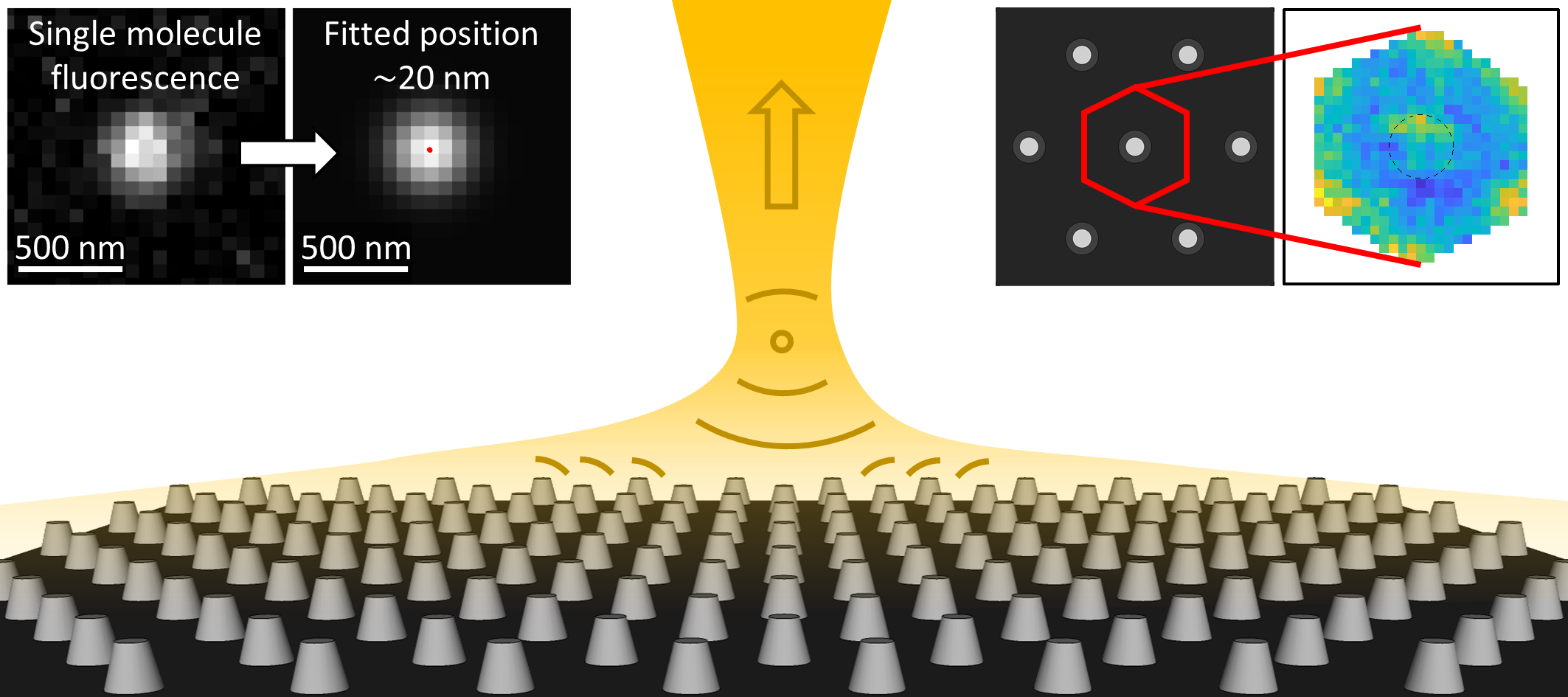In ACS Nano, PhD student Ruben Hamans and his colleagues at DIFFER and TU/e show how an array of metallic nanoparticles enhances light emission from nearby fluorescent molecules.
Why do fluorescent molecules shine brighter when they are on top an array of metallic nanoparticles? PhD student Ruben Hamans decided to find out together with colleagues from the DIFFER group on Nanomaterials for Energy Applications and TU/e's Surface Photonics group. Their paper in the scientific journal ACS Nano shows that, surprisingly, the array's electromagnetic field didn't make the fluorescent molecules emit more light. Rather, the rows of nano-antennas caused constructive interference that focuses all the emitted light in the forward direction, straight away from the surface (see illustration).

Nano-arrays: sensitive to light
Arrays of metallic nanostructures are a hot topic in physics because of their strong interaction with light, both in emitting and picking up electromagnetic waves. Understanding that process could open the way to applications from light harvesting in energy conversion devices, to sensing chemicals and solid-state lighting.
Ruben Hamans: “It has already been shown that particle arrays can influence the overall brightness of fluorescent molecules and the direction of their light emission, however so far we did not know how those properties were related to the position of the molecule relative to the particles in the array. With our super-resolution technique, we can now resolve nanoscale details of how light is emitted by individual molecules in the vicinity of these arrays. By combining our experimental imaging technique with numerical calculations, we discovered that nanoparticle arrays can “force” the light emitted by fluorescent molecules to be focused into a specific direction. This insight can have implications for photonic devices based on nanoparticle arrays, such as solid-state lighting and optical sensors.”
Typical signal observed on the camera of the microscope. Each bright spot corresponds to the fluorescence burst of one molecule. The size of the video corresponds to about 20 µm by 20 µm.
Diffraction limit
Andrea Baldi explains why it is hard to study nanoparticle arrays: "Their interparticle separation is typically of the order of the light wavelength (between 400 and 700 nanometers), making them very difficult to study with conventional optical microscopes.
In optics there is a fundamental limit to the resolution of a microscope called the diffraction limit. The diffraction limit states that, even with the best conventional optical microscope, it is impossible to distinguish two objects closer than about λ/2, where λ is the wavelength of the light used. Andrea Baldi: "In recent years, however, several optical microscopy techniques have been developed to “beat” the diffraction limit and image deeply sub-wavelength structures. These discoveries are so significant that they were recognized with the 2014 Nobel prize in Chemistry."
"At DIFFER we have assembled a super-resolution microscope capable of measuring the light emitted by a single molecule and finding its position within a few nanometers", explains Baldi. "In the present work we used an advanced optical microscopy technique called photo-activated localization microscopy (PALM) to map the influence of nanoparticle arrays on the light emission of single molecules with a resolution of only a few tens of nanometers. Our publication in ACS Nano shows that the enhanced light emission measured for molecules in proximity of an array arises from a “focusing” effect due to the collective influence of all the nanoparticles."
Publication
Super-Resolution Mapping of Enhanced Emission by Collective Plasmonic Resonances
ACS Nano 13 (2019) 4514-4521
doi: /10.1021/acsnano.9b00132
Go to the News page.